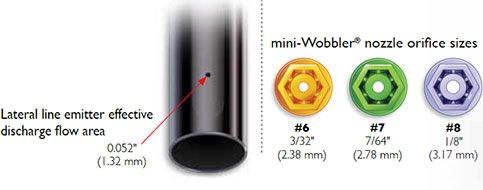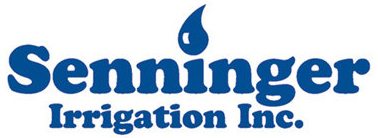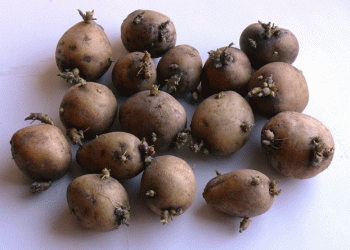Irrigation systems are vital for crop germination and are frequently used to distribute fertilizers or chemicals. In colder climates, overhead systems are also used for frost protection. Both drip and overhead irrigation systems can be used for fertigation or chemigation. However, drip can limit the options when it comes to product selection.
Growers can use foliar or soil-applied fertilizers with sprinklers. Foliar fertilizers are ideal for correcting nutrient deficiencies and reducing postharvest disorders. Foliar products take advantage of the leaves’ effectiveness in transporting nutrients. Certain soil conditions, such as high pH, low pH, drought, excessive moisture or cool temperatures, can make nutrient uptake through roots difficult. This means soil-applied fertilizers can keep crops healthy if the pH isn’t limiting nutrient availability.
Overhead systems also provide better pesticide options. With sprinklers, growers can throw chemicals on the underside of leaves, where insects and their eggs may hide. This helps prevent plant diseases and fungal problems caused by common pests.

When it comes to germination, overhead sprinklers apply water over the entire soil surface in a pattern similar to rainfall. The rain-like pattern makes sprinklers suitable for germination and irrigation, which is why sprinklers are used throughout the growing season. Drip systems place water near the drip line and are not as effective at germinating small seeds. This is especially true for sandy soils, since water may not be able to disperse horizontally and encourage root expansion.
Many growers with drip systems rely on other means of wetting the soil before they attempt germination. Nature doesn’t always cooperate, so growers may use overhead systems to imitate rainfall. If they decide to continue with drip for germination, they must pay attention to soil preparation, drip tape placement, and irrigation scheduling. Perhaps the biggest benefit of overhead systems is their ability to protect crops from frost damage in cold climates.
Sprinklers can protect crops from frost damage if evaporation is low but dew points are high in climates where temperatures drop to around 32 degrees Fahrenheit. They spray a consistent, uniform layer of water that freezes and crystallizes over plants. The freezing process releases about 80 calories of heat for every 0.03 ounce of water that freezes. The ice encases the plant and partially isolates it from the harsh temperatures.
Plus, sprinklers are more economical than heaters, with some sprinklers generating 2.5 million kilocalories of heat per hectare per hour with only 5 kilowatts of electric power.
Overhead irrigation: less complicated farm management at a lower cost

After switching to drip irrigation, growers initially use less water, save money and get similar yields as they did with an overhead system. Once that first year passes, the grower realizes that the system is complex and high-maintenance. Replicating the first year’s results requires several hours of labor and a keen eye for detail.
Drip systems need to function efficiently throughout the entire growing season. Any failure at a critical point in the production cycle can cause severe crop losses. Unfortunately, system failures are often the result of inadequate maintenance. Drip systems need constant filter monitoring and frequent flushes or replacements to prevent plugging. Emitter orifices range from 0.2 to 2 millimeters and are easily plugged by algae, fertilizer deposits, and minerals like calcium and iron.
The system’s filter should be flushed daily to prevent plugging, and an inspection of the entire system should be conducted weekly. Without proper filtration, water pressures will eventually crack the plugged lines. Chemicals also need to be incorporated into the grower’s management strategy to dissolve mineral concentrations that can plug emitters.
Overhead irrigation systems require less filtration since sprinklers have larger orifice sizes. This makes them suitable for growers who get irrigation water from lakes and rivers. The visible application pattern also makes it easier for growers to identify potential system issues before they adversely affect crop growth.







